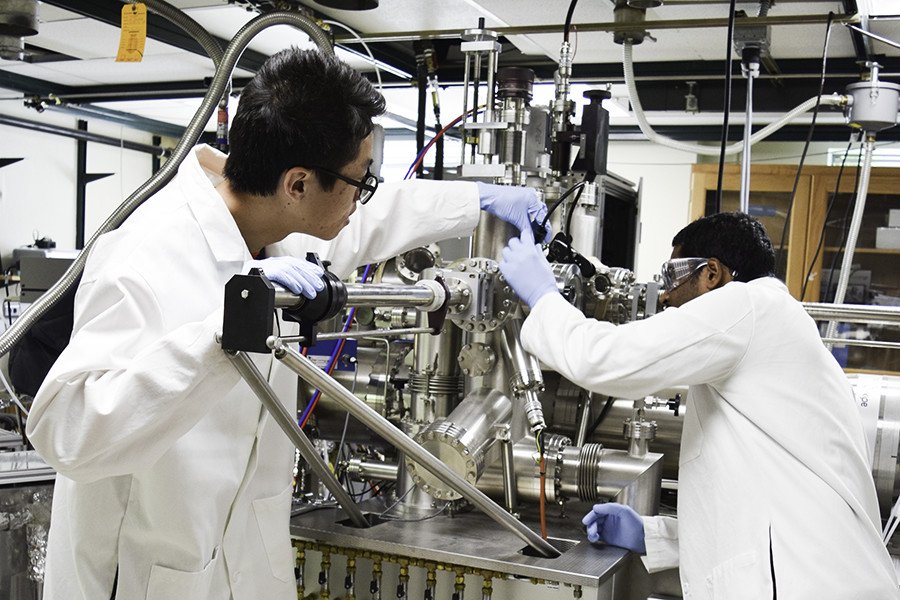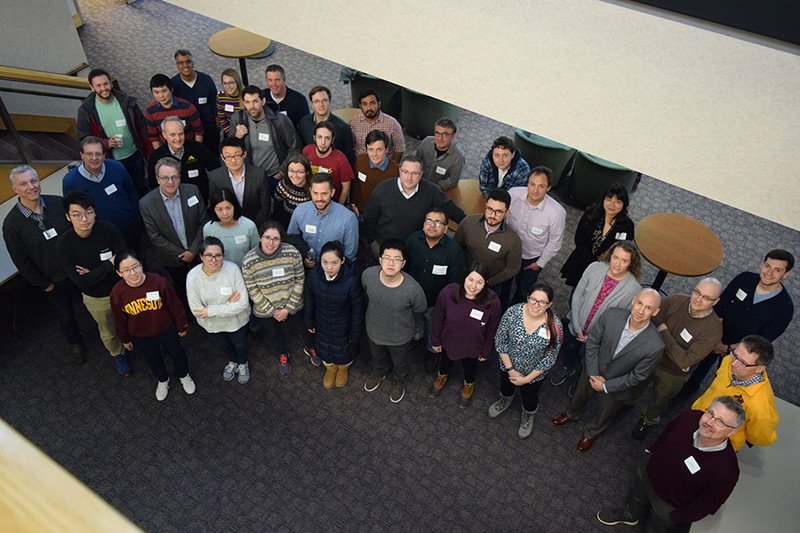University of Minnesota receives $18M grant for materials research

Funding also includes research and outreach to inspire the next generation
The National Science Foundation (NSF) has awarded $18 million in funding over the next six years for the University’s Materials Research Science and Engineering Center (MRSEC). The University of Minnesota MRSEC program is among only 11 centers nationwide receiving funding for successful collaborative research.
Since its inception in 1998, the University of Minnesota MRSEC has received cumulative total funding exceeding $79 million from NSF. The center’s researchers conduct cutting-edge materials research that enables important areas of future technology, ranging from biomedicine and electronics to security and renewable energy.
“This continued funding is a strong affirmation of the high national stature of modern materials research at the University of Minnesota and a testament to the consistently excellent research and outreach carried out by our students, postdocs, faculty, and staff," said University of Minnesota Regents Professor Timothy Lodge, a professor in the Department of Chemistry and Department of Chemical Engineering and Materials Science who has served as the MRSEC director since 2005.
The University of Minnesota MRSEC features two interdisciplinary research groups. The first group, led by Distinguished McKnight University Professor Chris Leighton in the Department of Chemical Engineering and Materials Science, aims to access novel electronic and magnetic properties by direct application of strong local electric fields to promising new materials. This Quantum Leap-aligned research will realize extraordinary materials control, thereby enabling new approaches to low-power magnetic data storage and processing, neuro-inspired computation, and nanophotonic devices such as solar cells.
The second group, led by Professor Mahesh Mahanthappa in the Department of Chemical Engineering and Materials Science, is developing novel and systematic approaches to assembling polymeric materials into network structures with superior property combinations. These will advance multiple applications, including membranes for removal of viruses and bacteria, materials for new battery designs, therapeutic delivery platforms, and efficient photovoltaic materials.
Chemistry’s involvement
The Department of Chemistry has a number of researchers involved with MRSEC, including professors Renee Frontiera, Christy Haynes, Jessica Lamb, Theresa Reineke and J. Ilja Siepmann, post-doctoral researchers Liwen Chen, Soumi Das, Lucy Liberman Solomon and Ke “Lucas” Luo, and graduate students Ethan Gormong, Rebeca Rodriguez, and Ziwei Yu.
In addition, professors Kyle Bantz, Lee Penn, and Jane Wissinger work with the MRSEC Research Experiences for Teachers (RET) program that allows teachers to actively participate in current research with faculty research groups and design standards-based classroom activities from those experiences. A popular program is the Green & Sustainable High School Teachers Workshop, now in its fourth year, created and led by Professor Wissinger and teachers Cassie Knutson from White Bear Lake High School and Cassie Javner from Shakopee High School.
Outreach & Education
Preparing the next generation of scientists and engineers is also a top priority for the University’s MRSEC. MRSEC investigators provide extensive research experiences for promising undergraduates from a national network of four-year colleges, minority serving institutions, and especially tribal colleges. Summer camps for high school students, drawn from the Twin Cities and from Native American communities across the upper Midwest, involve senior investigators, students, and postdoctoral fellows in hands-on laboratory activities. MRSEC also supports entertaining demonstration shows, which illustrate fundamental scientific principles to engage more than 50,000 K-12 students each year.
Preparing the next generation of scientists and engineers is a top priority for the University’s MRSEC. MRSEC investigators provide extensive research experiences for promising undergraduates from a national network of four-year colleges, minority serving institutions, and especially tribal colleges. Summer camps for high school students, drawn from the Twin Cities and from Native American communities across the upper Midwest, involve senior investigators, students, and postdoctoral fellows in hands-on laboratory activities. MRSEC also supports entertaining demonstration shows, which illustrate fundamental scientific principles to engage more than 50,000 K-12 students each year. Professor and Chemistry Department Head David Blank serves as MRSEC’s academic adviser to Phil Engen, MRSEC’s Education and Outreach director.
MRSEC is a major supporter of the University’s Energy & U show, which brings more than 12,000 students to campus annually for a dynamic, interactive show focused on the different forms of energy. MRSEC eliminates the financial cost of transportation, which is a barrier for the majority of schools attending, and supports efforts to recruit a majority of diverse students from underrepresented groups in the sciences. Professor Aaron Massari, Energy & U director, and Joseph Franek, chemical demonstration director, are also working on a MRSEC Partnership for Research and Education in Materials initiative with the University of Texas, Rio Grande Valley, which is developing an Energy & U show in Spanish that will then be shared with the University of Minnesota.
Partnerships with industry
In addition, MRSEC has interactions with industry that involve knowledge transfer in a pre-competitive collaboration with more than 20 companies. Shared experimental facilities provide access to state-of-the-art materials characterization instrumentation to a national base of more than 500 users.

“Materials are enablers of technologies that directly affect people’s lives,” said Dr. Linda Sapochak, director of the NSF Division of Materials Research. “The MRSEC program is a flagship program for the division and with these new awards will continue its long history of forging new discoveries and fueling new technologies.”
NSF’s nationwide MRSEC program provides sustained support of interdisciplinary materials research and education of the highest quality. Founded in 1994, the MRSEC program traces its roots to the Interdisciplinary Research Laboratories established in 1960. With a program investment of nearly $350 million over six years in emerging fields such as quantum materials, synthetic biology, and artificial intelligence, MRSECs leverage diverse expertise in areas such as polymers, ceramics, and magnetic nanomaterials to forge new research endeavors driven by a vision of the materials of tomorrow.
Reprinted with permission by the College of Science & Engineering, Communications Director Rhonda Zurn, and augmented with Department of Chemistry-specific information by Chemistry Communications Coordinator Eileen Harvala.